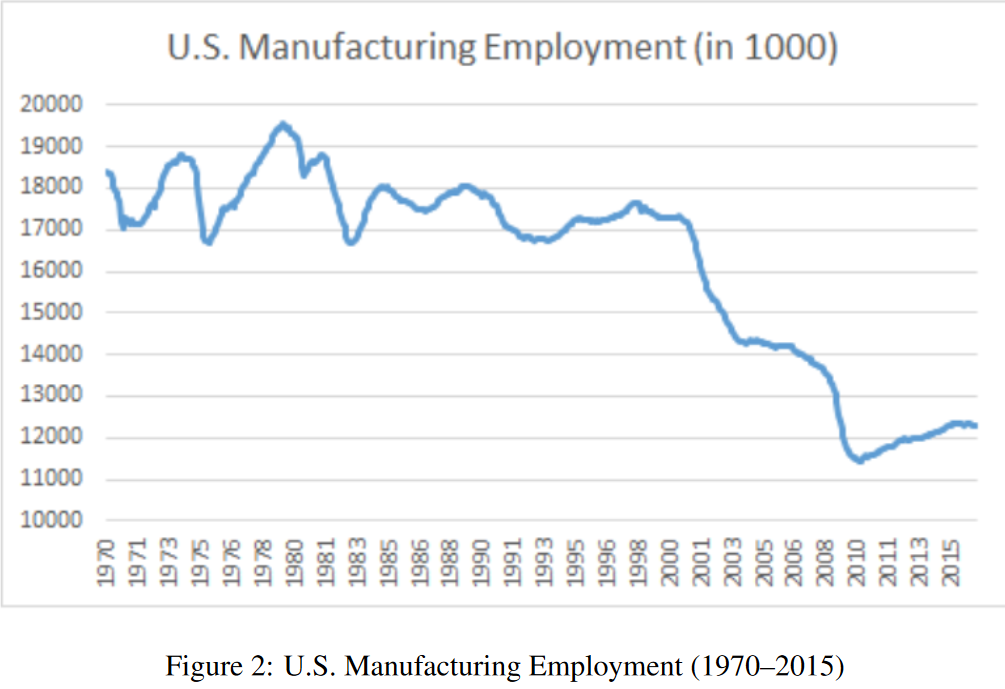China enters the WTO, U.S. manufacturing jobs begin a rapid decline; coincidence? It seems not.
The paper this week, from John Seungmin Kuk, Deborah Siligsohn and Jiakun (Jack) Zhang of the universities of Washington, Villanova and California respectively, digs into the political response to what is now increasingly referred to in the U.S. as the ‘China Shock’. This is the period, post China’s WTO accession, that U.S. manufacturing employment went into a steep decline (above).
Why does the China Shock matter? As the paper’s authors clinically sum up ‘..communities where the loss of manufacturing jobs was most concentrated experienced reduced lifetime earnings, higher rates of substance abuse, more broken families, falling property values, shrinking tax bases, and growing demand for government transfers.’ All not good outcomes.
So how did the Republican Party manage to more successfully reach out on the issue when their platform has historically been fundamentally based on ‘free-trade’? The short answer is by narrowing the issue to China. Democrats have traditionally been ‘fair’ traders but what an analysis of 170,000 press releases from politicians from both sides of the aisle from 2005 to 2010 shows is how the Republican stance over the period shifted.
For a long time before the 2016 election Republicans representing hard hit China Shock areas had been flipping the trade issue from arguments about ‘freeness’ to the issue of ‘fairness’. In this process they took over a patch historically owned by Democrats. At the same time, the analysis shows, they were better at providing a tangible bogey-man in the shape of China as the root-cause of problems [Or, as the Donald insists, “Ch-eye-na”].
The researchers swerve the obvious conclusion that if China has been identified as a problem (which they also point out it really isn’t) then the present trade negotiations may be a rolling process, incapable of resolution, we’ll have to live with for the indefinite and foreseeable [Hip-Hip!].
You may not have time for the full paper but try to at least skip to P.31 for the concluding meat. You can get there via this link to the full text The Partisan Divide in U.S. Congressional Communications.
Er, Happy Sunday?
